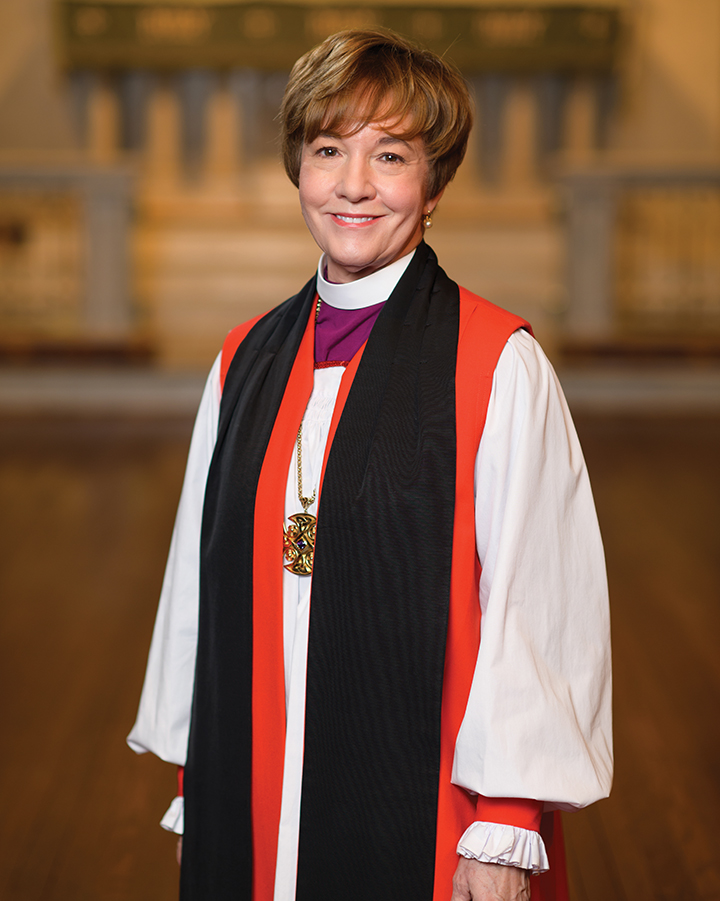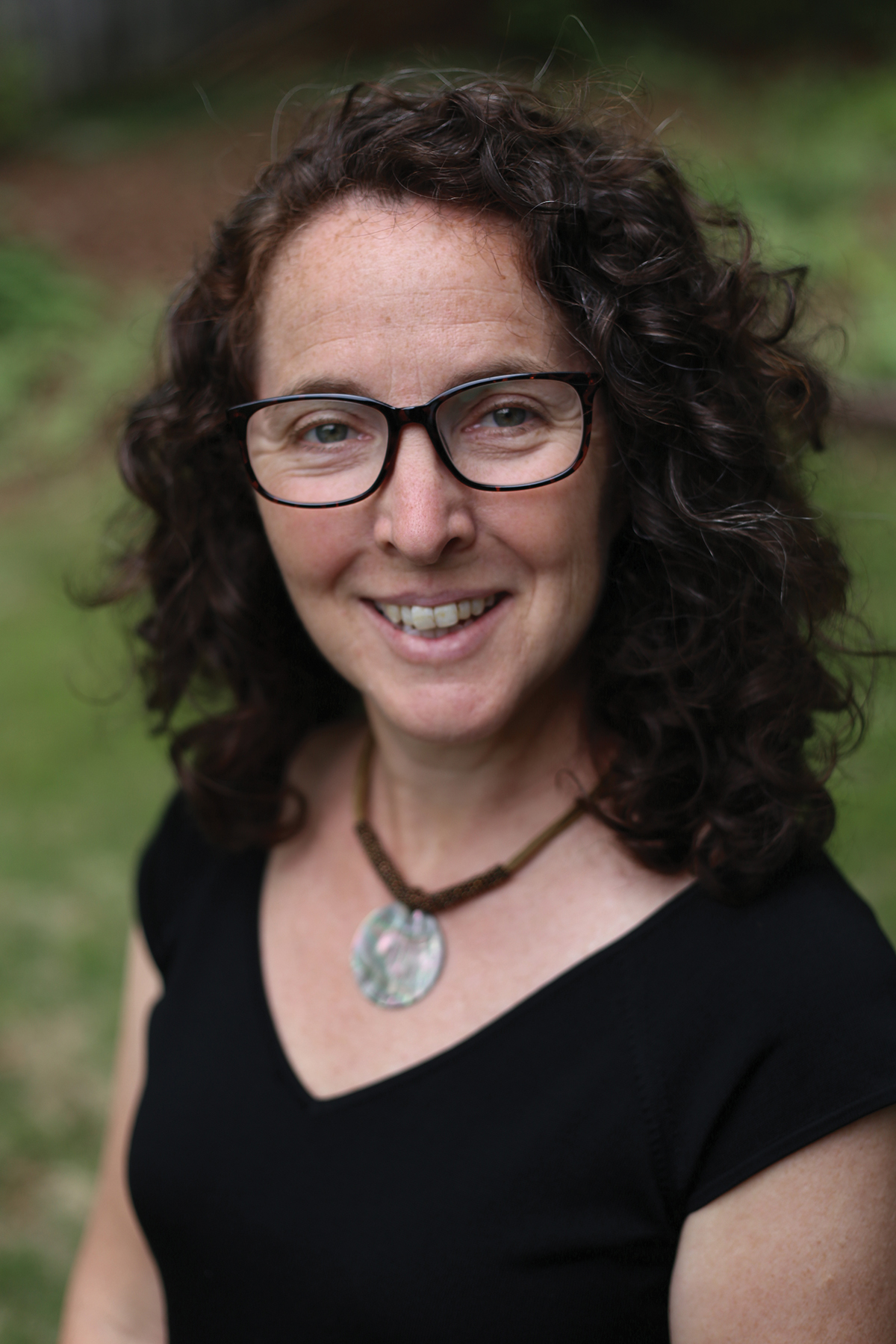Becoming Deeper Green Churches
“A deeper green makes the spiritual connections between what is happening with the natural eco-systems and what is happening within the church itself. A deeper green makes clear the connections between creation care, church life, and God’s plan of salvation. A deeper green engages the gospel story. In other words, deep green is Good News.”
-Rev. Dr. Jerry Cappel
The quotation above from the Rev. Jerry Cappel appears in an article entitled “Deeper Green Churches” in which Cappel outlines a vision for how the life of the church can and should be brought into loving communion with the rest of God’s good Creation. We have chosen the goal of Becoming Deeper Green Churches as the first and foundational goal of the creation care priority for the diocesan mission strategy. What, then, does it mean to become a deeper green, and, more importantly for us, what does it mean to become a deeper green church?
A conversation that I had with Cappel now more than 10 years ago serves as a good answer. To paraphrase, he told me that it was time to move ecology out of the committee and into the pew so that care for the Earth and the life, including our own, that it supports is not seen as a special interest but instead as essential for Christian formation. Becoming a deeper green involves understanding, valuing and protecting the natural environments upon which all of God’s creatures depend for survival. Becoming a deeper green church involves doing this not from a new, outsider perspective that we must incorporate into our faith but instead based on the spiritual wisdom upon which our faith stands.
Thankfully, a theological understanding of God’s ongoing creation is an integral part of Christian faith and practice. Our scriptures begin with two vivid stories of creation in the book of Genesis. The first describes in systematic detail the creation of all the heavens and life on Earth with the continual affirmation of the goodness of creation. In the second story, Adam and Eve are placed in Eden as farmers responsible for tilling and keeping God’s garden. The very name Adam is derived from the Hebrew word “adamah,” meaning Earth, and we learn that all life is made from the very same ground from which God created humanity. We are literally “earthlings” sharing kinship with all forms of life that spring forth from God’s creative grace.
As we read these beautiful stories of divine creativity, we often overlook the profound significance of what takes place at the end of the first creation story when the priestly author tells us that God rests on the seventh day after six days of creation. By instituting the Sabbath in telling the story of the origins of life, creation becomes a liturgy with the Sabbath as thanksgiving for the divine gift of life. We should not forget as we follow this theme of sabbath throughout our scriptures that all non-human life and the land that supports it is granted sabbath rest to give thanks for God’s life-giving grace.
As we journey through our scriptures, we continually see the goodness of creation affirmed and reflected in God’s delight in the beauty and value of all earthly life in passages like the poetry of Psalm 104, in God’s speech to Job from the whirlwind beginning in Job 38, and many more. A good resource for such passages is The Green Bible, a translation in which the editors highlight the creation-centered passages in green. Conveniently, it is offered in the New Revised Standard Version translation, a translation featured in our lectionary readings. Purchase a copy for your congregation and explore how our scriptures inform us that we are creatures of God called to reverently participate in God’s sacred community of life.
The connection continues seamlessly in the New Testament. In the prologue to the Gospel of John, we are provided with the foundation for our theology of the incarnation as the Word of God through whom all life comes into being becomes flesh in Jesus. We understand that the God of Creation came into the world to live with us (Emmanuel) in a unique way in the life of Jesus. We also affirm that this same divine reality is still with us, intimately present to and with us in the lives we lead in the 21st century.
In our communities of worship, we continue to witness this presence through our participation in the sacraments which are defined in the Book of Common Prayer as “outward and visible signs of inward and spiritual grace.” We celebrate the real presence of divine grace in the Eucharist through the material substances of bread, wine and water, and this liturgical practice, in turn, points us outward to live the good news of the Gospel in the world and experience the life-giving grace of God in all of the natural world.
Eucharist means thanksgiving, and, as with the first creation story from Genesis, the Eucharist provides a sacramental liturgy of thanksgiving for life in all of its beauty and even pain and uncertainty. As we gather around our eucharistic altars, we give thanks for the divine presence with us in this life and are then sent out to witness to the presence of grace in the world around us. The Christian story of creation, incarnation and resurrection, presented to us in our eucharistic liturgy, is grounded in God’s creative role as the source and sustenance of life and orients us so that we may constantly witness God sacramentally through the life we encounter. As we go deeper in prayer and understanding, our increasing awareness of grace in God’s ongoing creation can lead us toward a greater valuation of the sacred communion of life on Earth.
Consequently, becoming a deeper green church is not primarily about introducing ecological issues into the life of our communities of worship but instead is about allowing our tradition to speak to the goodness of God’s creation, our place in that creation, and how, as fellow creatures in God’s community of life, we have a responsibility to foster loving communion with all that emerges from God’s life-giving grace.
The source of creation care is therefore not scientific or political. While caring for creation is informed by science and has political implications, its primary inspiration flows from the heart of the Gospel message to love God and love our neighbors as ourselves. When we become deeper green churches, reverence and protection for creation flows from the very foundation of our tradition.
We are formed as a worshiping community through Scripture and liturgy, but they also orient us to the sacramental presence of God’s grace always with us in nature. Such an awareness grounds us in our Christian tradition while simultaneously providing the potential for our understanding and care for the natural world to become a sacramental thanksgiving for life on Earth. By following this path, we not only become a deeper shade of green in our relationship to God’s community of life, but we also become deeper green churches more faithfully following the way of Jesus toward the goal of realizing beloved community. We will only realize the dream of becoming beloved community if we are true to our tradition and commit to living fully the Gospel’s message of love. Recognizing that we are part of God’s community of life and, as such, are called to value creation and to understand and protect the sacred connections that sustain it is an important part of this commitment.
According to Cappel, becoming a deeper green church requires that creation care has a “palpable presence at the altar, in the classrooms and at the fellowship” of our churches and an integral place in the sacramental life of the church in “worship, liturgy, theology and gospel.” We have chosen Becoming Deeper Green Churches as the first goal of the creation care priority’s mission strategy because it is the foundation upon which all of creation care’s goals are built. Therefore, I think it appropriate to conclude here with the words with which Cappel ended his article, words that so beautifully portray why embodying creation as deeper green churches is essential to living a full, Christian life:
"By letting the fellowship of creation into our worship, prayer, and communal life, and by letting their kinship into our hearts, our own hearts will be saved. Because as we expand our hearts to let them in, we will in turn learn to love them, as is natural for us to do. And as we learn to love them, we will come to recognize their holiness and worth. And as we recognize their holiness, we will in turn come to recognize our own. And in that knowing, we too will be saved. For that is, after all, the gospel of salvation."
Amen.
David McDuffie is the chair of the diocesan Chartered Committee on Environmental Ministry.
To read more about the mission strategy, Creation Care priority and stories of creation care work happening in churches, download the special "Priority Stories" edition of the digital Disciple. Designed specifically for mobile and online devices, the digital Disciple is available to all at no cost and is available on the Apple App Store and Google Play. Simply search for “North Carolina Disciple,” and you will find the familiar diocesan shield. Once you’ve downloaded the app, simply choose the issue you wish to read and enjoy!
 Assistant Bishop
Assistant Bishop
 Mission Strategy Coordinator
Mission Strategy Coordinator
